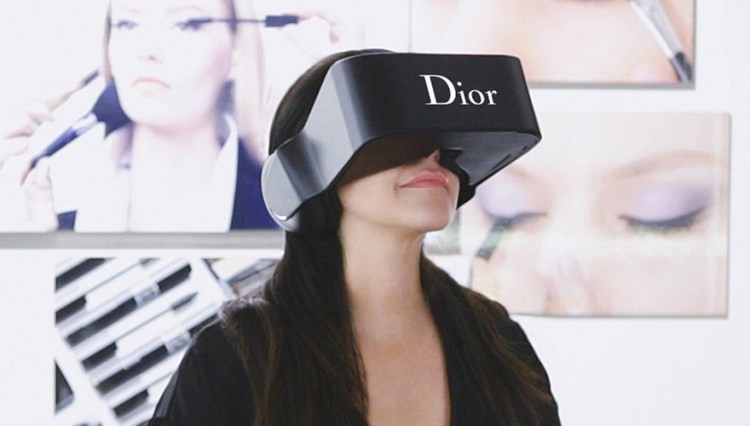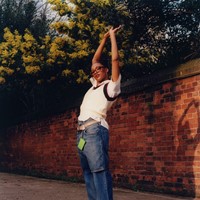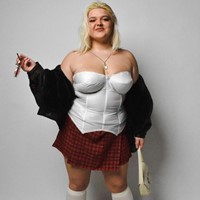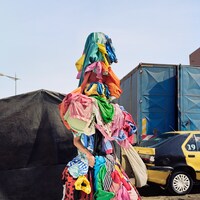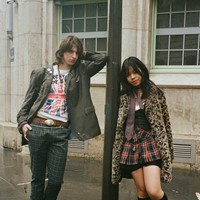Balenciaga, Hussein Chalayan and Dior are all flirting with 360 degree filming – so is the runway video as we know it a thing of the past?
When Alexander McQueen teamed up with Nick Knight’s SHOWstudio in 2009 to become the first designer to livestream a show, the way we consume fashion changed forever. Unfortunately, the industry’s first stream didn't quite go as planned – Lady Gaga tweeted that her new track “Bad Romance” was to be debuted as the models took to the runway, crashing the host website. Still, a new frontier had been broken, bringing online audiences closer to fashion – and it’s one that this season is being pushed to even higher technological ground.
This week, Balenciaga announced that they would be streaming their AW16 show – the first under new creative director Demna Gvasalia of Vetements – to a mobile and tablet app in the form of 360 degree, virtual reality footage. Calling it “a new panorama, for a new era of Balenciaga”, the house described the gesture as “an egalitarian proposition, allowing a worldwide audience the unique opportunity to view a Balenciaga show like never before…immediate and real-time for the new creative identity of the maison.” While details on how this will look are sparse, we can assume that giant VR headsets won’t be necessary – viewers will most likely be able to simply move their phones or manipulate their screens to control the direction of the camera.
“I'm excited about it because it gives the viewer an experience removed from both space and time” – Hussein Chalayan on Virtual Reality fashion
And Balenciaga aren’t the only ones. Yesterday morning, renowned runway experimenter Hussein Chalayan announced that shortly after his show today, a 360 video will be available to view online. “I'm excited about it because it gives the viewer an experience removed from both space and time,” the designer told us – in other words, the technology allows an almost omnipresent view of fashion. For Chalayan, who is working in collaboration with Swarovski, it’s far from the first time he’s dabbled in the high tech and futuristic – he’s previously shown LED-lit dresses, transformative robotic outfits, and last season, models wore garments that simply melted away beneath streams of water.
360 filming is a technique that’s already been employed in several high-profile cases – last season, for what was later revealed to be Raf Simons’ final show for Dior, the house made a post-show video available in this style where viewers could use a click wheel to view different aspects of the runway. Back in June, they also debuted Dior Eyes, a 3D printed virtual reality headset found in select stores that promised to “lift the curtain” on the house’s latest ready-to-wear show, giving shoppers an immersive look behind the scenes. Björk also famously used the technique for her recent Dazed-premiered “Stonemilker” video, and (unsurprisingly) companies have started exploring the pornographic, first-person POV possibilities of VR headsets.
One question might be – how does it all work? According to Sol Rogers, Managing Director of REWIND – the London-based production studio behind Björk’s video, the technology has a couple of different iterations. “Creators have a great deal of choice when it comes to selecting the hardware used to film with,” he explains. “Standard cameras can be adapted for 360 degree shooting with the use of bespoke rigs, this footage is then put through a post production pipeline to ‘stitch’ the multiple videos together to form a single spherical video. There is also a growing demand for 360 degree cameras which remove the need for such a labour-intensive post production period, such as the Theta S from Ricoh.” And although the term virtual reality is being used interchangeably with 360 degree filming, Rogers insists that “There’s a big difference between immersive pre-recorded video content – 360 degree content – and ‘True VR’...and many in the industry object to mixing the two.”
So why the sudden surge of interest? Rogers points to Facebook, who bought forerunning VR company Oculus for $2bn in 2014 in an epic case of Kickstarter-turned-goldmine. “Interest in Virtual Reality has exploded in the last three years, mainly thanks to Oculus and their CEO Palmer Luckey,” he says. “They have been at the head of the pack when it comes to HMD (head mounted display) development, and its innovations have been a driving force behind the adoption of VR; as the technology continues to improve, more people want to try it which further drives demand for better and better hardware.”
“The end of this month will see the release of Oculus Rift, one of the world’s first consumer-aimed VR headsets...it doesn’t seem unrealistic to expect that a few years down the line, we might all be getting up close and personal with fashion week from the comfort of our own headsets”
That certainly seems to be the case in fashion. Before Instagram was even invented, livestreams broke down the elitist walls encircling the hallowed, secret space of the runway show, opening it up to new global audiences. As technology improved, so did the streams – to the point where watching a runway online might even give you a better view than being there in the flesh. One recent example is Kanye West’s Yeezy Season 3 show – with its sweeping camera angles and intimate close-ups, viewers streaming had a kind of epic, cinematic experience that those sat up in the stalls in Maidson Square Gardens were physically distanced from. The adoption of 360 is evidence that this digital democracy is ever-expanding, and gaining pace – with brands increasingly prioritising fans and consumers over now seemingly archaic systems (as with the See-Now, Buy-Now trend embraced to different extents by everyone from Burberry to Prada).
As the industry considers the shortcomings of its current means of operation, the future of the fashion show is being called into question. If clothes on the catwalk are immediately available to buy, the runway becomes less a practical resource for buyers and press to see new collections, and even more of an all-encompassing brand experience, designed to spawn a thousand social media moments. One thing to note – the end of this month will see the release of Oculus Rift, one of the world’s first consumer-aimed VR headsets, priced at $600 (that’s cheaper than a new iPhone). What this could mean for the future of the fashion show is yet to be seen – but it doesn’t seem unrealistic to expect that a few years down the line, we might all be getting up close and personal with fashion week from the comfort of our own headsets.
